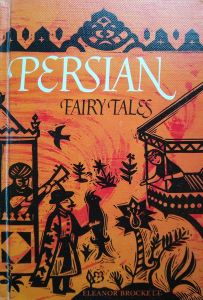Persian Fairy Tales

Author:
Charles E. Brock
Illustrator:
Harry Toothill
Cover Artist:
Ellis Credle
Publication:
1962 by Follett Publishing Company
Genre:
Fairy Tales, Fiction, Folk Tales
Pages:
224
Current state:
Basic information has been added for this book.
It is under consideration and will be updated when it is evaluated further.
Book Guide
Search for this book used on:
Full of the magic of moonlight and minarets and the romance of roses and rubies, these fairy tales and legends come from a Persia of long ago. Here the reader will find the guile and humor of the bazaar and a fantastic panorama of characters—golden heroes of legendary times, beautiful princesses, cat-headed demons, white dragons, fearsome-looking djinns, benevolent genii, and simple folktale animals.
As in all fairy tales the forces of good and evil do battle. The evil spirit Iblis will pose as a wise old man and lure a once-blameless king into disaster, but a great prophet too will assume this guise to protect the innocent. Sultans cloak themselves in anonymity and wander through the bazaar searching out wrongdoing. The Wonder-bird, half beast and half bird, will in one tale nurture a future hero of Persia to manhood, while in another will be slain as a demon.
The peculiar twists of fortune and logic in these tales from the East will enchant the reader who enjoys the unfamiliar and exotic.
From the dust jacket
To view an example page please sign in.
Content Guide
Please sign in to access all of the topics associated with this book and view other books with the same topics.
Please sign in to access the locations this book takes place in and view other books in the same location.
Please sign in to access information about the content of this book that you may want to consider before reading.
Resource Guide
Episode 70: Why Read Fairy Tales?
Released in 2020 by The Literary Life
Available formats: Streaming Audio
Length: 1 hr. 29 min.
View on the The Literary Life site
"Angelina Stanford and Cindy Rollins tackle the topic of fairy stories, discussing the what, why and how of reading them. Angelina shares the distinctive characteristics of fairy stories in contrast to other types of stories, such as myths. They deal with the question of whether fairy tales are 'escapist', the influence of the Grimm brothers scholarly work on interpreting fairy stories, and allowing the story to unveil its deeper truths without forcing meaning onto it.
Angelina gives an illustration of how to see the gospel messages in fairy tales by talking us through the story of Sleeping Beauty. She refutes the ideas that fairy tales are about human romance or are misogynistic. She also highlights some of the Enlightenment and Puritan responses to fairy tales that still linger with us today. Cindy and Angelina also discuss some common concerns such as the magical, weird, or scary aspects of fairy tales. Angelina also makes a distinction between folk tales, literary fairy tales, and cautionary tales."
Find This Book
Search for this book used on:



